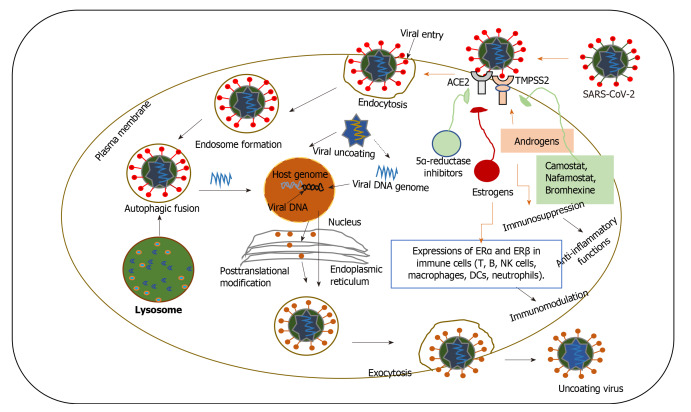Figure 5.
The role of sex hormones and hormone therapies in modulating severe acute respiratory syndrome coronavirus 2 entry in host cells and immune response. The replication cycle of severe acute respiratory syndrome coronavirus 2 (SARS-CoV-2) begins when the virion binds to the host cell receptor, angiotensin-converting enzyme 2 (ACE2) via its spike protein S1 subunit. After receptor binding, the virus gains access to the cytosol by acid-dependent proteolytic cleavage of the S protein into S1 and S2 subunits by a furin, cathepsin, transmembrane serine protease 2 (TMPRSS2), or another protease, followed by S2-assisted fusion of the viral and cellular membranes. In this proposed model, androgens can upregulate the activity of TMPRSS2 which is necessary for the SARS-CoV-2 spike protein priming. Female sex hormones, estrogens might downregulate the ACE2 expression, which is used by SARS-CoV-2 for host cell entry. Androgens suppress the inflammatory responses by decreasing the activity of the peripheral blood mononuclear cells, as well as the release of inflammatory factors and cytokines, such as IL-1β, IL-2, TNF-α. Female sex hormones, estrogens and progesterone exert a protective effect on females, through direct antiviral activity or immune-mediated mechanisms. Estrogen receptors (ERα and ERβ) are expressed in a diverse array of immune cells (T, B, natural killer cells, macrophages, DCs, neutrophils) and modulates immune responses. SARS-CoV-2: Severe acute respiratory syndrome coronavirus 2; ACE2: Angiotensin-converting enzyme 2; TMPRSS2: Transmembrane serine protease 2; ERs: Estrogen receptors.

